4-Benzoylbenzonitrile
Modify Date: 2025-09-19 09:19:47

4-Benzoylbenzonitrile structure
|
Common Name | 4-Benzoylbenzonitrile | ||
|---|---|---|---|---|
| CAS Number | 1503-49-7 | Molecular Weight | 207.22700 | |
| Density | 1.19g/cm3 | Boiling Point | 377ºC at 760mmHg | |
| Molecular Formula | C14H9NO | Melting Point | 110-114 °C(lit.) | |
| MSDS | Chinese USA | Flash Point | 181.8ºC | |
| Symbol |

GHS07 |
Signal Word | Warning | |
| Name | 4-cyanobenzophenone |
|---|---|
| Synonym | More Synonyms |
| Density | 1.19g/cm3 |
|---|---|
| Boiling Point | 377ºC at 760mmHg |
| Melting Point | 110-114 °C(lit.) |
| Molecular Formula | C14H9NO |
| Molecular Weight | 207.22700 |
| Flash Point | 181.8ºC |
| Exact Mass | 207.06800 |
| PSA | 40.86000 |
| LogP | 2.78928 |
| Vapour Pressure | 6.95E-06mmHg at 25°C |
| Index of Refraction | 1.616 |
| InChIKey | YSZWJJANSNFQMM-UHFFFAOYSA-N |
| SMILES | N#Cc1ccc(C(=O)c2ccccc2)cc1 |
Synonym: Section 2 - COMPOSITION, INFORMATION ON INGREDIENTS
Risk Phrases: 20/21/22 Section 3 - HAZARDS IDENTIFICATION EMERGENCY OVERVIEW
Harmful by inhalation, in contact with skin and if swallowed. Potential Health Effects Eye: May cause eye irritation. Skin: May cause skin irritation. Harmful if absorbed through the skin. Ingestion: Harmful if swallowed. May cause irritation of the digestive tract. Inhalation: Harmful if inhaled. May cause respiratory tract irritation. Chronic: Not available. Section 4 - FIRST AID MEASURES Eyes: Flush eyes with plenty of water for at least 15 minutes, occasionally lifting the upper and lower eyelids. Get medical aid. Skin: Get medical aid. Flush skin with plenty of water for at least 15 minutes while removing contaminated clothing and shoes. Ingestion: Get medical aid. Wash mouth out with water. Inhalation: Remove from exposure and move to fresh air immediately. If not breathing, give artificial respiration. If breathing is difficult, give oxygen. Get medical aid. Notes to Physician: Section 5 - FIRE FIGHTING MEASURES General Information: As in any fire, wear a self-contained breathing apparatus in pressure-demand, MSHA/NIOSH (approved or equivalent), and full protective gear. Extinguishing Media: Use water spray, dry chemical, carbon dioxide, or chemical foam. Section 6 - ACCIDENTAL RELEASE MEASURES General Information: Use proper personal protective equipment as indicated in Section 8. Spills/Leaks: Vacuum or sweep up material and place into a suitable disposal container. Section 7 - HANDLING and STORAGE Handling: Avoid breathing dust, vapor, mist, or gas. Avoid contact with skin and eyes. Use only in a chemical fume hood. Storage: Store in a cool, dry place. Store in a tightly closed container. Section 8 - EXPOSURE CONTROLS, PERSONAL PROTECTION Engineering Controls: Use adequate ventilation to keep airborne concentrations low. Exposure Limits CAS# 1503-49-7: Personal Protective Equipment Eyes: Not available. Skin: Wear appropriate protective gloves to prevent skin exposure. Clothing: Wear appropriate protective clothing to prevent skin exposure. Respirators: Follow the OSHA respirator regulations found in 29 CFR 1910.134 or European Standard EN 149. Use a NIOSH/MSHA or European Standard EN 149 approved respirator if exposure limits are exceeded or if irritation or other symptoms are experienced. Section 9 - PHYSICAL AND CHEMICAL PROPERTIES Physical State: Solid Color: Not available. Odor: Not available. pH: Not available. Vapor Pressure: Not available. Viscosity: Not available. Boiling Point: Not available. Freezing/Melting Point: 109 - 112 deg C Autoignition Temperature: Not available. Flash Point: Not available. Explosion Limits, lower: Not available. Explosion Limits, upper: Not available. Decomposition Temperature: Solubility in water: Specific Gravity/Density: Molecular Formula: C14H9NO Molecular Weight: 207.23 Section 10 - STABILITY AND REACTIVITY Chemical Stability: Stable. Conditions to Avoid: Incompatible materials. Incompatibilities with Other Materials: Strong oxidizing agents, strong bases, strong reducing agents. Hazardous Decomposition Products: Nitrogen oxides, carbon monoxide, carbon dioxide. Hazardous Polymerization: Will not occur. Section 11 - TOXICOLOGICAL INFORMATION RTECS#: CAS# 1503-49-7 unlisted. LD50/LC50: Not available. Carcinogenicity: 4-Cyanobenzophenone - Not listed by ACGIH, IARC, or NTP. Section 12 - ECOLOGICAL INFORMATION Section 13 - DISPOSAL CONSIDERATIONS Dispose of in a manner consistent with federal, state, and local regulations. Section 14 - TRANSPORT INFORMATION IATA No information available. IMO No information available. RID/ADR No information available. Section 15 - REGULATORY INFORMATION European/International Regulations European Labeling in Accordance with EC Directives Hazard Symbols: XN Risk Phrases: R 20/21/22 Harmful by inhalation, in contact with skin and if swallowed. Safety Phrases: S 36/37 Wear suitable protective clothing and gloves. WGK (Water Danger/Protection) CAS# 1503-49-7: No information available. Canada None of the chemicals in this product are listed on the DSL/NDSL list. CAS# 1503-49-7 is not listed on Canada's Ingredient Disclosure List. US FEDERAL TSCA CAS# 1503-49-7 is not listed on the TSCA inventory. It is for research and development use only. SECTION 16 - ADDITIONAL INFORMATION N/A |
| Symbol |

GHS07 |
|---|---|
| Signal Word | Warning |
| Hazard Statements | H302-H312-H315-H319-H332-H335 |
| Precautionary Statements | P261-P280-P305 + P351 + P338 |
| Personal Protective Equipment | dust mask type N95 (US);Eyeshields;Gloves |
| Hazard Codes | Xn: Harmful; |
| Risk Phrases | R20/21/22 |
| Safety Phrases | S26-S36 |
| RIDADR | 3439 |
| WGK Germany | 3 |
| Packaging Group | III |
| Hazard Class | 6.1 |
| HS Code | 2926909090 |
| Precursor 10 | |
|---|---|
| DownStream 10 | |
| HS Code | 2926909090 |
|---|---|
| Summary | HS:2926909090 other nitrile-function compounds VAT:17.0% Tax rebate rate:9.0% Supervision conditions:none MFN tariff:6.5% General tariff:30.0% |
|
Electrochemical t-Butylation of Some Aromatic Ketones. Kristensen LH and Lund H.
Acta Chem. Scand. B 33 , 735-741, (1979)
|
|
|
Electrochemically induced aromatic nucleophilic substitution. Pinson J and Saveant JM.
J. Am. Chem. Soc. 100(5) , 1506-1510, (1978)
|
|
|
Mechanistic approach to the sensitization process of aromatic ketones in the isomerization between norbornadiene and quadricyclane. Arai T, et al.
Bull. Chem. Soc. Jpn. 60(8) , 2937-2943, (1987)
|
| 4-benzoylbenzonitrile |
| EINECS 216-126-6 |
| MFCD00016382 |
| 4-Cyanobenzophenone |
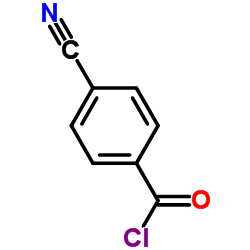 CAS#:6068-72-0
CAS#:6068-72-0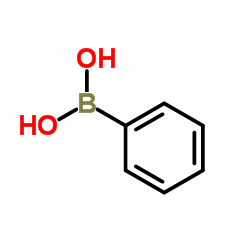 CAS#:98-80-6
CAS#:98-80-6 CAS#:619-65-8
CAS#:619-65-8 CAS#:65-85-0
CAS#:65-85-0 CAS#:126747-14-6
CAS#:126747-14-6 CAS#:90-90-4
CAS#:90-90-4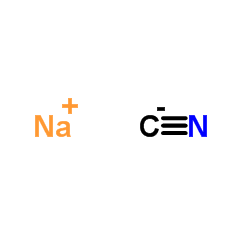 CAS#:143-33-9
CAS#:143-33-9 CAS#:201230-82-2
CAS#:201230-82-2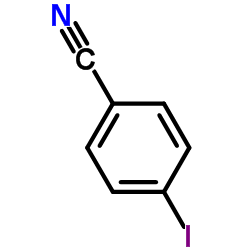 CAS#:3058-39-7
CAS#:3058-39-7 CAS#:383-35-7
CAS#:383-35-7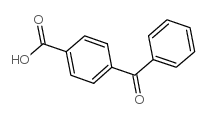 CAS#:611-95-0
CAS#:611-95-0 CAS#:7664-41-7
CAS#:7664-41-7![4-[hydroxy(phenyl)methyl]benzonitrile structure](https://image.chemsrc.com/caspic/158/13391-47-4.png) CAS#:13391-47-4
CAS#:13391-47-4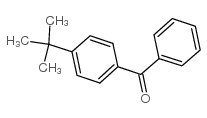 CAS#:22679-54-5
CAS#:22679-54-5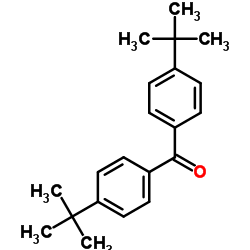 CAS#:15796-82-4
CAS#:15796-82-4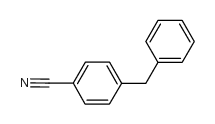 CAS#:23450-31-9
CAS#:23450-31-9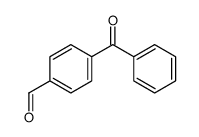 CAS#:20912-50-9
CAS#:20912-50-9![[4-[3-[4-(dimethylamino)phenyl]propyl]phenyl]-phenylmethanone structure](https://image.chemsrc.com/caspic/230/73060-15-8.png) CAS#:73060-15-8
CAS#:73060-15-8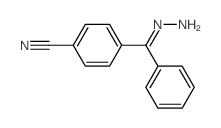 CAS#:838-13-1
CAS#:838-13-1![4-[diazo(phenyl)methyl]benzonitrile structure](https://image.chemsrc.com/caspic/004/838-14-2.png) CAS#:838-14-2
CAS#:838-14-2
